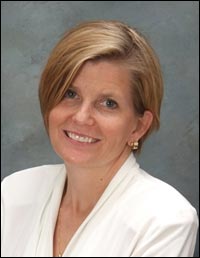Super Lawyers, Part Two: What makes one super?
By: Jane Pribek//September 1, 2011//

The week before last, I wrote about a few lawyers’ impressions of being designated as “Super Lawyers” by the Minnesota-based publication of the same name (one I find slightly schlocky).
Wausau’s Christine Bremer Muggli told me she’s proud to have been repeatedly selected, and, “to the extent the selection process is peer-driven and honest,” said she has no problem with Super Lawyers.
Her comment sparked this week’s examination of the Super Lawyers selection process. Particularly, is it honest?
The website’s description is lengthy. The process begins by creating a candidate pool from three sources: 1) formal nominations by peers; 2) in-house nominations, called Star Search evaluations (another hokey name); and informal nominations, from others.
You can’t nominate yourself, but any lawyer with five or more years’ experience can nominate a peer at MySuperLawyers.com.
Cindy Larson, the research and editorial director for Super Lawyers, said that for the 2010 Wisconsin list, approximately 11,600 peer nominations and evaluations were considered, some of which were duplicates. Larson did not break it down regarding the number of nominations versus evaluations.
After an individual attorney receives a designated number of nominations, she said, no more are accepted. That cap keeps it from becoming a popularity contest.
The website assures they have procedures and technology that look for attempts to game the system, such as “back scratch nominations” where two lawyers nominate each other, or “block nominations,” where members of the same law firm all cast identical nominations.
Super Lawyers assigns points to each nomination, the specifics of which aren’t explained on the website. Lawyers may nominate other lawyers within their firm, if these are matched by an “out firm” nomination. Out firm nominations receive more points, but the website doesn’t quantify how many. It states that no points are given for informal nominations.
Extra points are given for admission in certain institutions, such as the American College of Trial Lawyers (http://www.actl.com//AM/Template.cfm?Section=Home). The website says they also search for overlooked lawyers, such as those in smaller communities or highly specialized practice areas.
All told, points are awarded in 12 categories. They are verdicts and settlements, transactions, honors and awards, representative clients, experience, special licenses or certifications, position within law firm, bar and/or other professional activity, pro bono and community service as a lawyer, scholarly lectures and writings, education and employment background, and other outstanding achievements.
Different point amounts are awarded for each category, although Larson would not reveal the specific point values, saying that information is proprietary. The most important consideration, she said, is quality of the current legal work, as opposed to where a candidate went to law school.
Ballots are then sent to “Blue Ribbon Panels,” which doesn’t mean that participants are rewarded with cases of Pabst – sorry, I just couldn’t resist, you are a Wisconsin audience, and they deserve it for another silly term.
The panels, Larson said, are “relatively small” groupings of lawyers within practice areas who’ve received the highest point totals. The panels are larger for the practice areas where there are many nominees and smaller for the more obscure concentrations.
Milwaukee attorney Lynn Laufenberg, who’s participated at this level many times evaluating personal injury lawyers like himself, said it entails reviewing several pages of nominees. Evaluators are asked to rate nominees on a numeric scale with regard to several criteria, he said. Laufenberg takes the task very seriously, he said.
Candidates are then grouped by firm size, Larson said, to ensure that firms of varying sizes are represented in the final selection, which is based on points and made exclusively by Super Lawyers. Then, Super Lawyers does additional research, making sure none of its designees has been professionally disciplined, for example.
It’s only after that point that separate advertising staff follow-up with the designees, Larson said. Advertising plays no role in the selection process, she said, or in the editorial content or cover of the magazine.
Now, Larson’s “proprietary information” response aside, the process does sound fairly rigorous.
I’m not alone in that conclusion. In 2008, the New Jersey Supreme Court overturned an ethics opinion from its Committee on Attorney Advertising finding that Super Lawyers and Best Lawyers in America violated that state’s advertising rules. The New Jersey court considered a 304-page report by a special master who examined the various selection processes. It mentions that a confidentiality consent order prevents detailing Super Lawyers’ proprietary information. It nonetheless characterized Super Lawyers’ process as “sophisticated, comprehensive and complex.”
Moreover, it looks like the American Bar Association’s Commission on Ethics 20/20 Commission isn’t going to propose revising the Model Rule on Advertising to prohibit attorney ranking systems anytime soon.
Still, I have one gripe: Where are the women lawyers?
The website posts “The Top 50 Wisconsin Super Lawyers for 2010” and on that list, there is only one woman. You read that right: Madison’s Marie Stanton is the only woman who made the list.
The website additionally lists “The Top 10 Wisconsin Super Lawyers for 2010.” Guess how many women are on that list? Zero.
“In terms of the Top 50, I can’t really comment on that necessarily,” Larson said. “But I can tell you that, in terms of the breakdown from the total list, what we have found is that it’s on par with the nationwide reported statistics of women partners in firms.”
Which usually hovers just below 20 percent — a dismal statistic.
She added that Super Lawyers also publishes its Rising Stars, which honors lawyers under age 40 or those who’ve been in practice for fewer than 10 years. Larson said the percentage of women is higher there, and will probably continue to increase.
In the meantime, Super Lawyers has created a list of the Top 25 Wisconsin Women Super Lawyers.
Muggli said there are things women can do to improve their showing, however.
“It’s the law business and it’s a man’s world,” she said. “Remember, this is gauged by votes, so either men aren’t voting for women, or women aren’t voting for women. It’s something we should all be aware of and work harder toward.
“Because certainly there should be more than one woman in that list.”
Jane Pribek can be reached at [email protected].
[polldaddy poll=”5470737″]
Legal News
- Wisconsin joins Feds, dozens of states to hold airlines accountable for bad behavior
- Trump ahead of Biden in new Marquette poll
- Bankruptcy court approves Milwaukee Marriott Downtown ‘business as usual’ motion
- New Crime Gun Intelligence Center to launch in Chicago
- Arrest warrant issued for Minocqua Brewing owner who filed Lawsuit against Town of Minocqua
- Wisconsin Supreme Court justices question how much power Legislature should have
- Reinhart named the 2024 Wisconsin law firm of the year by benchmark litigation
- Milwaukee’s Common Council now has the most African Americans, women and openly LGBTQ members ever
- Office of School Safety Provides Behavioral and Threat Assessment Management Training Ahead of 25th Anniversary of Columbine Shooting
- Wisconsin Supreme Court to hear arguments in Democratic governor’s suit against GOP-led Legislature
- Lawsuit asks Wisconsin Supreme Court to strike down governor’s 400-year veto
- Wisconsin man pleads not guilty to neglect in disappearance of boy
WLJ People
- Power 30 Personal Injury Attorneys – Russell Nicolet
- Power 30 Personal Injury Attorneys – Benjamin Nicolet
- Power 30 Personal Injury Attorneys – Dustin T. Woehl
- Power 30 Personal Injury Attorneys – Katherine Metzger
- Power 30 Personal Injury Attorneys – Joseph Ryan
- Power 30 Personal Injury Attorneys – James M. Ryan
- Power 30 Personal Injury Attorneys – Dana Wachs
- Power 30 Personal Injury Attorneys – Mark L. Thomsen
- Power 30 Personal Injury Attorneys – Matthew Lein
- Power 30 Personal Injury Attorneys – Jeffrey A. Pitman
- Power 30 Personal Injury Attorneys – William Pemberton
- Power 30 Personal Injury Attorneys – Howard S. Sicula








